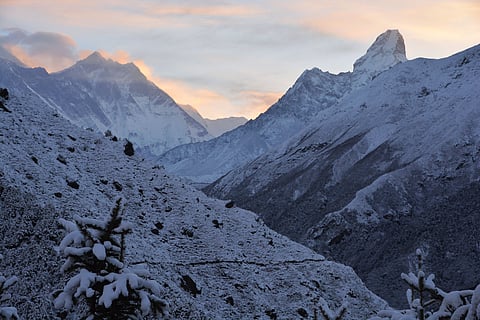The Himalaya runs over 3600 kilometres from the Hazarahjat Highlands in the west to the Liangshan in the east. The Himalaya forms no natural watershed, and many of the rivers are of greater antiquity than the mountains themselves. The Kali Gandaki bisects the Himalaya into two halves of roughly equal length. The Eastern Himalaya is the half which runs eastward from the Dhaulagiri across the Himalaya, sub-Himalaya, Meghalaya, lower Brahmaputra basin and associated hills tracts, the eastern Tibetan plateau and Indo-Burmese borderlands into the Chinese provinces of Yunnan and Sichuan.
As a cradle of ethnogenesis, the Eastern Himalaya served both as staging area and principal thoroughfare in the peopling of Asia following the emergence of anatomically modern humans from Africa. New scientific insights from historical linguistics and population genetics enable us to reconstruct the founding dispersals of language families of Eastern Eurasia and Oceania which ultimately originated in the Eastern Himalaya. In presenting this new account, it is necessary first to dispel two antiquated scholarly ideas, one which still lives on in the popular imagination and another which survives in laggardly quarters of the linguistic community.

